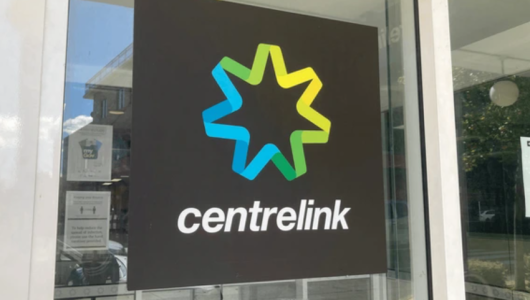Centrelink update leaves many owed cash or facing new debt challenges
By
Gian T
- Replies 0
With the new financial year underway, many people are preparing for the usual process of reconciling their government payments.
Whether you're familiar with systems like Family Tax Benefit and Child Care Subsidy or just starting out, this period often comes with a blend of hope and concern.
Some are looking forward to a potential boost, while others worry they might face an unexpected bill. Either way, the outcome can have a real impact on household budgets.
Let’s break down what this balancing act means for you, how it works, and what you can do to make the process as smooth as possible, plus, we’ll share some tips to help you avoid any nasty surprises next year.
Balancing is Centrelink’s way of double-checking that the payments you received throughout the financial year match your actual income.
Since payments like FTB and CCS are based on your estimated income, there’s always a chance that the estimate didn’t quite hit the mark.
Maybe you worked a few extra shifts, picked up a side hustle, or your partner’s hours changed.
Whatever the reason, the end-of-year balancing process is designed to set things straight.
If you overestimated your income, you might be in for a pleasant surprise—a top-up or supplement could be coming your way.
On the flip side, if you underestimated, you could find yourself owing money back to Services Australia. But don’t panic!
This is a normal part of the process, and there are ways to manage it.
After 30 June, Centrelink starts confirming your actual annual income, usually through your tax return lodged with the ATO, or by notifying Centrelink directly if no return is required.
Family Tax Benefit (FTB) and Child Care Subsidy (CCS) are balanced separately, with FTB starting in July and CCS from mid-August after information is received from childcare providers.
Once your tax return is lodged, the ATO confirms your income with Centrelink, which can take up to 28 days, and you can track updates via the Centrelink app or myGov.
If you separated from a partner during the year, Centrelink will use your ex-partner’s income estimate if their return hasn’t been lodged, handling most of the follow-up unless CCS requires your confirmation.
After finalising balancing, Centrelink will notify you of the outcome, including any refund or repayment details.
If the balancing process reveals that you were overpaid, you’ll need to repay the debt.
Centrelink can recover debts from any FTB top-ups or supplements you’re entitled to, even if you already have a repayment plan in place.
If you’re worried about making repayments, don’t hesitate to contact Centrelink. They can help you set up a plan that suits your circumstances, especially if you’re experiencing financial hardship.
No one likes a surprise bill, so here are some practical steps to help you avoid owing money at tax time:
To avoid surprises at balancing time, make sure to update your income estimate as soon as your circumstances change, whether that’s a new job, altered hours, or unexpected income.
You can also choose how much of your Family Tax Benefit you receive fortnightly, with some people opting for smaller regular payments to reduce the chance of overpayment and get a lump sum later.
For the Child Care Subsidy, Centrelink automatically withholds five per cent of your payments to guard against overpayment, but you can increase this withholding if you prefer.
Finally, staying organised with your income records, payments, and any Centrelink communication will make it easier to provide information promptly if requested.
If you’re feeling overwhelmed or confused by the process, you’re not alone! Centrelink’s systems can be tricky to navigate, especially if your circumstances are complex.
Don’t be afraid to reach out for help, whether it’s calling Centrelink directly, visiting a Services Australia office, or asking for advice from a trusted friend or family member.
 Have you been through the balancing process before? Did you end up with a top-up, or were you surprised by a debt? Do you have any tips for fellow members on how to keep your payments on track? Share your experiences and advice in the comments below.
Have you been through the balancing process before? Did you end up with a top-up, or were you surprised by a debt? Do you have any tips for fellow members on how to keep your payments on track? Share your experiences and advice in the comments below.
Read more: Tax-Time Traps and Triumphs: How Age Pensioners Navigate the Tax Maze in Retirement
Whether you're familiar with systems like Family Tax Benefit and Child Care Subsidy or just starting out, this period often comes with a blend of hope and concern.
Some are looking forward to a potential boost, while others worry they might face an unexpected bill. Either way, the outcome can have a real impact on household budgets.
Let’s break down what this balancing act means for you, how it works, and what you can do to make the process as smooth as possible, plus, we’ll share some tips to help you avoid any nasty surprises next year.
Balancing is Centrelink’s way of double-checking that the payments you received throughout the financial year match your actual income.
Since payments like FTB and CCS are based on your estimated income, there’s always a chance that the estimate didn’t quite hit the mark.
Maybe you worked a few extra shifts, picked up a side hustle, or your partner’s hours changed.
Whatever the reason, the end-of-year balancing process is designed to set things straight.
If you overestimated your income, you might be in for a pleasant surprise—a top-up or supplement could be coming your way.
On the flip side, if you underestimated, you could find yourself owing money back to Services Australia. But don’t panic!
This is a normal part of the process, and there are ways to manage it.
After 30 June, Centrelink starts confirming your actual annual income, usually through your tax return lodged with the ATO, or by notifying Centrelink directly if no return is required.
Family Tax Benefit (FTB) and Child Care Subsidy (CCS) are balanced separately, with FTB starting in July and CCS from mid-August after information is received from childcare providers.
Once your tax return is lodged, the ATO confirms your income with Centrelink, which can take up to 28 days, and you can track updates via the Centrelink app or myGov.
After finalising balancing, Centrelink will notify you of the outcome, including any refund or repayment details.
If the balancing process reveals that you were overpaid, you’ll need to repay the debt.
Centrelink can recover debts from any FTB top-ups or supplements you’re entitled to, even if you already have a repayment plan in place.
If you’re worried about making repayments, don’t hesitate to contact Centrelink. They can help you set up a plan that suits your circumstances, especially if you’re experiencing financial hardship.
To avoid surprises at balancing time, make sure to update your income estimate as soon as your circumstances change, whether that’s a new job, altered hours, or unexpected income.
You can also choose how much of your Family Tax Benefit you receive fortnightly, with some people opting for smaller regular payments to reduce the chance of overpayment and get a lump sum later.
For the Child Care Subsidy, Centrelink automatically withholds five per cent of your payments to guard against overpayment, but you can increase this withholding if you prefer.
Finally, staying organised with your income records, payments, and any Centrelink communication will make it easier to provide information promptly if requested.
Don’t be afraid to reach out for help, whether it’s calling Centrelink directly, visiting a Services Australia office, or asking for advice from a trusted friend or family member.
Key Takeaways
- Centrelink balances your Family Tax Benefit (FTB) and Child Care Subsidy (CCS) payments after the financial year ends, which could result in a cash top-up or a debt to repay.
- You need to confirm your (and your partner’s) income to finalise balancing, either by lodging a tax return or letting Centrelink know if you don’t need to lodge; this can be done via your myGov account or the Express Plus Centrelink app.
- If you separate during the year, Centrelink can balance your FTB using your ex-partner’s income estimate if their tax return hasn’t been lodged, and you don’t need to contact your ex directly.
- To avoid getting a debt at tax time, make sure your family income estimate is always up to date throughout the year, and consider increasing your CCS withholding percentage to reduce the chance of overpayment.
Read more: Tax-Time Traps and Triumphs: How Age Pensioners Navigate the Tax Maze in Retirement








